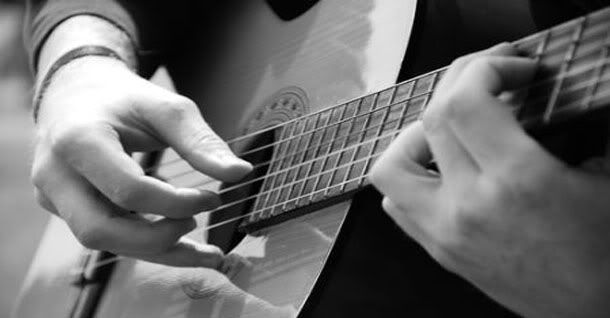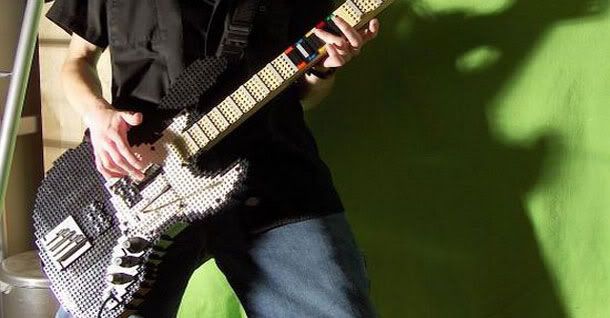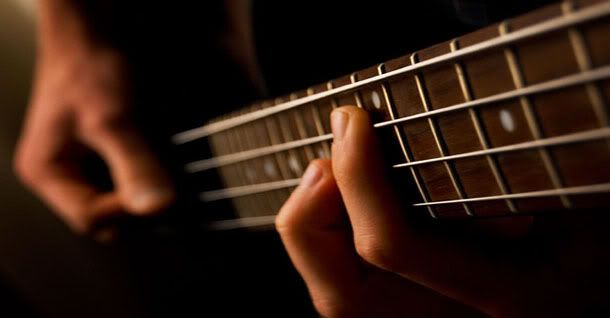C Major Scale Video Lesson
I still remember that this is the video from which I learned my first, and most favorite scale many many years back. It is the scale of C major and this lady has taught it in a good way. You should utilize this to learn the C major scale with 2 variations: Btw, all the Guitar Grenaders out there, The Official Squidoo Page of Guitar Grenade has been launched which you can visit here http://www.squidoo.com/guitar-grenade. Visit, Read, Like it, Drop comments and Share.

Avril Lavigne Guitar chords
Here, I have gathered the very best of Avril Lavigne songs chords. Avril Lavigne is one of my most favorite female singers in the music world and I love to play her songs... Enjoy....

This is featured post 3 title
Replace these every slider sentences with your featured post descriptions.Go to Blogger edit html and find these sentences.Now replace these with your own descriptions.This theme is Bloggerized by Lasantha - Premiumbloggertemplates.com.

March 09, 2010
How to use a guitar tuner?
 10:51 PM
10:51 PM
 Basit Ally
Basit Ally
What is the difference between an accoustic guitar and an electric guitar?
 10:49 PM
10:49 PM
 Basit Ally
Basit Ally
How To Read Tabs (Part 2)
 9:55 PM
9:55 PM
 Basit Ally
Basit Ally
p = pull off
h = hammer on
\ = slide (downward)
b = string bend
/ = slide (upward)
~ = string vibratoe |------------------------------------------------| B |------------------------------------------------| G |-----------------------9-11-11h12 12p11--9h11---| D |-9-9h11--11p9--9-11/12--------------------------| A |------------------------------------------------| E |------------------------------------------------|
first, D string at 9th fret is played. Then we notice 9h11. This means you put your finger at 9th fret, pick the string than hammer the 11th fret. Hammering means you pick a string with your finger at one fret, then without picking that string again you use your fretting hand to hit another fret (in this case 11th fret) hard enough to creat sound. Remember, you pick once but get 2 notes when hammering. Next we see 11p9. This means pick the string at 11th fret then 'pull-off' that finger while another finger is already placed at 9th fret. It's like pincing the string at 11th fret with the fretting hand while you have a finger placed at 9th fret. The effect is like reverse hammering. 2 notes are played with one picking of the strumming hand. Hammering and pull-offs are often done in a row like 9h11p9. It's playing the 9th fret, then hammering the 11th fret and then pulling-off to 9th fret again. All with just one pick of the strumming hand. Sound difficult? You will learn it if you practice. It's not that hard.
As we move along the tab, we notice 11/12. This means you hold down 11th fret and pick the string, then without releasing the pressure, you 'slide' the finger to 12th fret. Again, you pick once but get two notes when sliding.
\ is just sliding in the other direction. So 5\3 means slide from 5th fret to 3rd fret, picking onle once (at 5th fret).
~ means just vibrating the finger when you hold down a string at a fret. It gives a nice effect.
b means bending the string at a fret to give the sound of another fret. For a beginner I would suggest, avoid string bending for now, and don't try to play the tabs that has a lot of string bending.
My final advice for the beginner who is now ready to read his first tab: start with a simple tab like 'Come as you Are' - Nirvana or 'Hurt' - Johnny Cash.
Sorce
How To Read Tabs (Part 1)
 9:53 PM
9:53 PM
 Basit Ally
Basit Ally
Guitars usually have six strings (there are 7 string and 12 string guitars also, we'll ignore them now). The first thing you have to know is the name of the six strings. The top string is the thickest string, and it is called the 6th string or E-string because it plays E note at open fret (when you don't hold down any frets and just pick the string), assuming standard tuning. The next string is called 5th string or A string for similar reasons. The other string in order are 4th or D string, 3rd or G string, 2nd or B string and 1st or e-string (thinnest string). As the 1st and 6th string are both E notes, we distinguish the 1st string by writing it in a smaller case 'e'.
Now we are ready to move to tabs.
The first thing you will notice about tabs is that there are six lines. They represent the six strings of the guitar. They look like this:
e ------------------------ B ------------------------ G ------------------------ D ------------------------ A ------------------------ E ------------------------
I have written the string names (the note each string plays when you don't hold down any frets) on the left, this may not be given in all tabs. If it is not given, you have to assume that it is the same as I have written. Note that the top string of your guitar (the 6th or E string) is written at the bottom of the tab, and the bottom string (1st of e string) is written at the top. Many beginners get confused at this, but this is the standard way to write tabs (don't ask me why).
Also note that in some cases the string names may be writter differently. These are the cases when the song is not played with standard tuning. That means the open strings don't play the notes E,A,D,G,B,e but some other notes. As this lesson is for beginners, we will stick to standard tuning guitar tabs.
The next thing you notice on a tab is the numbers. The numbers represent frets. 1 means 1st fret, 2 means second fret and so on. A 0 (zero) means open string. For example:
e --------2----------------- B ------3---3--------------- G ----2-------2------------- D --0----------------------- A -------------------------- E --------------------------
The tab is read from left to right. So, this tab means, first you play D string at open fret, then G string at 2nd Fret, then B string and 3rd fret and so on. If you know your chord, then you would notice that this tab plays the notes of D-major chord.Another example:
e --0--0--0--2--2-------------- B --0--0--2--3--3-------------- G --1--1--2--2--2-------------- D --2--2--2--0--0-------------- A --2--2--0--x--x-------------- E --0--0--x--x--x--------------
The difference between this tab and the first tab is that in this tab, multiple strings are hit at the same time, so this indicates strumming. At first you hold down and A and D string and 2nd fret and G string at 1st fret and play all 6 strings. If you know chords, then you would notice that this is E-major chord. According to the tab, E-major chord is strummed twice. The next chord is A-major which is strummed once and then D-major is strummed twice.The x indicates that that string is not played. Meaning you don't hit that string with your strumming hand. It could also indicate a dead note. This means that you play that string with your strumming hand but it doesn't make a sound becuase you muted that string with your other hand. Holding a string lightly (rather than pressing it firmly down at the fret board) and hitting it creates a dead note. Wheather or not a string in not played or a dead note can be confusing as they are both represented by x. Listining to the song will often give you a clue. For a beginner, assume that the x indicates that the string is not played.
Source






